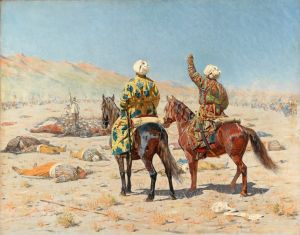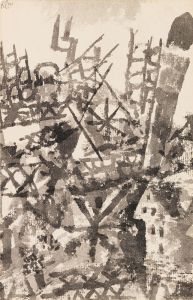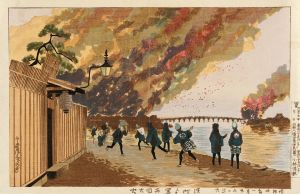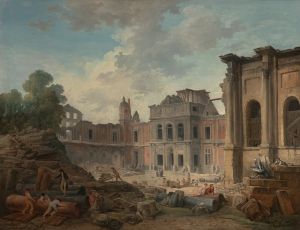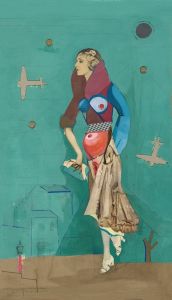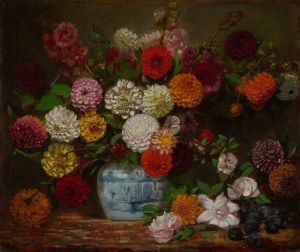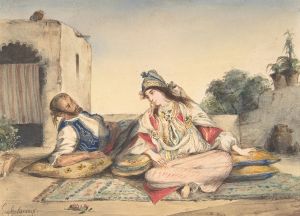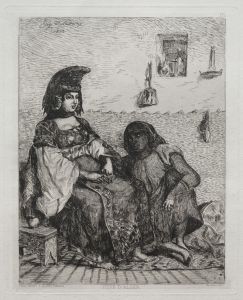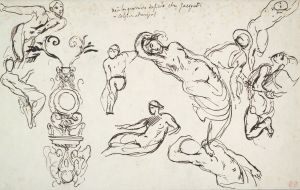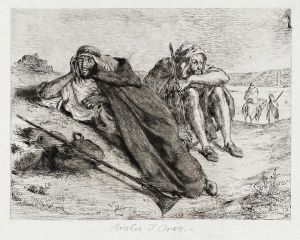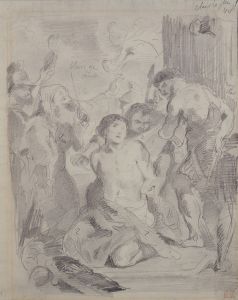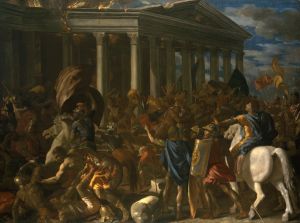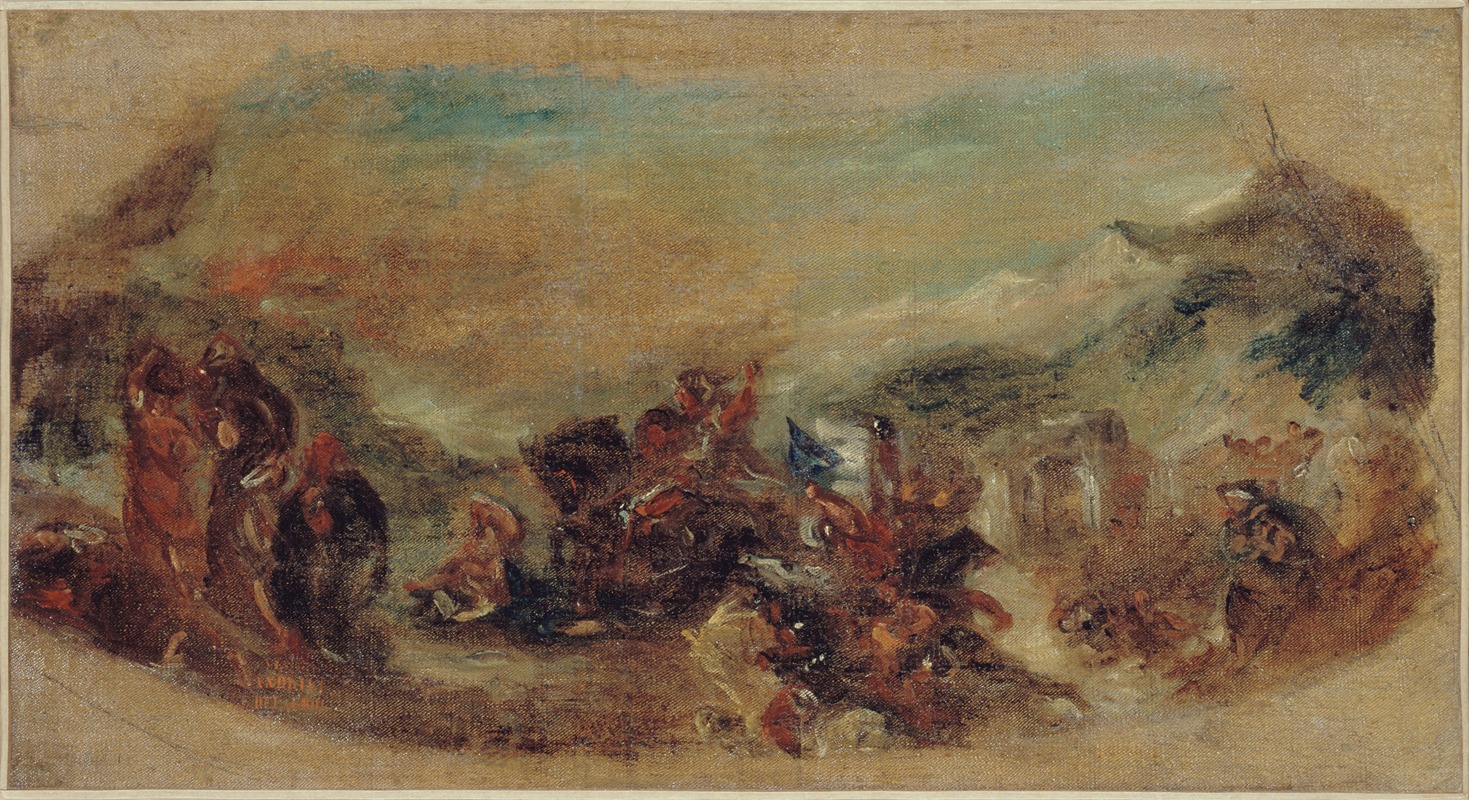
Attila suivi de ses hordes barbares foule aux pieds l’Italie et les Arts
A hand-painted replica of Eugène Delacroix’s masterpiece Attila suivi de ses hordes barbares foule aux pieds l’Italie et les Arts, meticulously crafted by professional artists to capture the true essence of the original. Each piece is created with museum-quality canvas and rare mineral pigments, carefully painted by experienced artists with delicate brushstrokes and rich, layered colors to perfectly recreate the texture of the original artwork. Unlike machine-printed reproductions, this hand-painted version brings the painting to life, infused with the artist’s emotions and skill in every stroke. Whether for personal collection or home decoration, it instantly elevates the artistic atmosphere of any space.
Eugène Delacroix's painting "Attila suivi de ses hordes barbares foule aux pieds l’Italie et les Arts" (Attila Followed by His Barbarian Hordes Trampling Italy and the Arts) is a significant work by the renowned French Romantic artist. Created in 1843-1847, this painting is part of a larger series of works commissioned for the decoration of the Galerie d'Apollon in the Louvre Museum, Paris. Delacroix, known for his vibrant use of color and dynamic compositions, was a leading figure in the Romantic movement, which emphasized emotion, individualism, and the glorification of the past and nature.
The painting depicts the infamous Hun leader Attila, who reigned from 434 to 453 AD, leading his barbarian forces as they ravage Italy. This historical event is symbolic of the destructive force of barbarism against the refined and cultured world of classical antiquity. Delacroix's work captures the chaos and violence associated with Attila's invasions, which were part of the larger series of events contributing to the decline of the Roman Empire.
In the composition, Attila is portrayed as a dominant and fearsome figure, riding a horse and leading his troops. The imagery of destruction is evident as the hordes trample over representations of the arts and civilization, symbolizing the obliteration of cultural achievements by brute force. Delacroix's use of dramatic contrasts in light and shadow, as well as his dynamic brushwork, enhances the sense of movement and turmoil in the scene.
The painting is a reflection of the Romantic fascination with historical and exotic subjects, as well as the tension between civilization and savagery. Delacroix's interest in such themes can be seen in many of his works, where he often explored the conflicts and contrasts between different cultures and epochs. This particular work also reflects the 19th-century European concerns with the preservation of cultural heritage amidst the political upheavals and transformations of the time.
Delacroix's "Attila suivi de ses hordes barbares foule aux pieds l’Italie et les Arts" is housed in the Louvre Museum, where it remains an important example of Romantic art and its engagement with historical narrative. The painting not only showcases Delacroix's technical skill and artistic vision but also serves as a commentary on the fragility of cultural achievements in the face of destructive forces.
Overall, this work exemplifies Delacroix's ability to convey complex historical and emotional themes through his mastery of color, composition, and dramatic storytelling. It remains a significant piece within the context of 19th-century art and continues to be studied and appreciated for its artistic and historical value.





